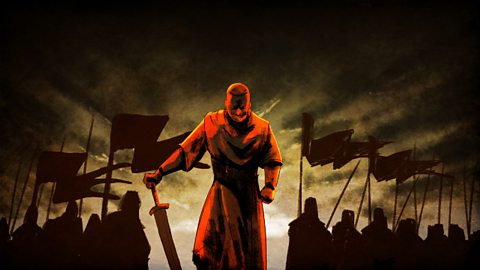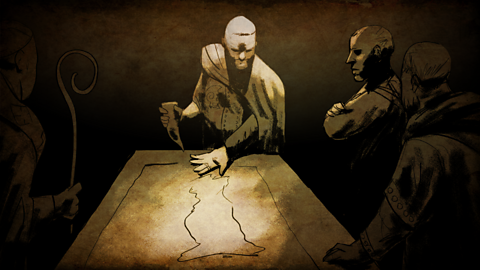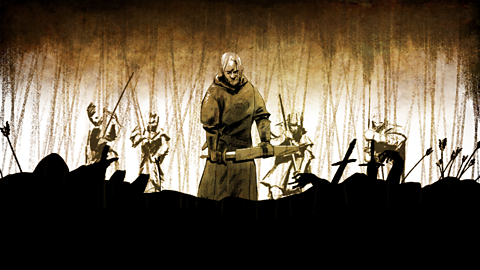Video summary
The Battle of Stamford Bridge was the second September battle in 1066, between King Harold of England and King Harald of Norway and Tostig.
The Anglo-Saxon army had marched all the way from London to Stamford Bridge - near York - in only five days, and managed to catch the invaders unprepared.
Harald and Tostig arrived in Northern England in 300 ships, but only 24 were needed to take the survivors, including Harald's son Olaf, home to Norway.
Two of the contenders for the throne were killed at Stamford Bridge, leaving only William in a position to challenge Harold Godwinson.
Teacher Notes
Key Stage 3:
Florence of Worcester is mentioned as writing an account of the Battle of Stamford Bridge in the Anglo-Saxon Chronicles. Students could look at how Florence of Worcester would know about the events at Stamford Bridge?
Key Stage 4:
Compare the Battle of Fulford with the Battle of Stamford Bridge. Are there any similarities you can find? What is the significance of the Battle of Stamford Bridge in the story of 1066?
This clip will be relevant for teaching History in secondary schools in the UK. This topic appears in OCR, Edexcel, AQA, WJEC KS4/GCSE in England and Wales, CCEA GCSE in Northern Ireland and SQA National 4/5 in Scotland.
1066: The claimants to the throne (1/6) video
Edward the Confessor died in January 1066 without a son or heir. Who would be chosen to be king?

1066: The Battle of Fulford (2/6) video
In the first major battle of 1066, the Viking king of Norway, and Harold Godwinson's own brother Tostig, invade the north of England.

1066: The Battle of Hastings (4/6) video
William of Normandy arrives in Sussex for the decisive battle of the Norman Conquest.

1066: King William and Domesday Book (5/6) video
How William the Conqueror secured control over England.

1066: Revolt and resistance (6/6) video
How did the Anglo-Saxons resist Norman rule after 1066?

Ěý